-
 Bitcoin
Bitcoin $83,389.0021
-2.66% -
 Ethereum
Ethereum $1,569.2797
-4.59% -
 Tether USDt
Tether USDt $0.9999
0.01% -
 XRP
XRP $2.0509
-4.63% -
 BNB
BNB $578.6020
-1.83% -
 Solana
Solana $125.0106
-4.93% -
 USDC
USDC $0.9999
0.00% -
 TRON
TRON $0.2528
0.57% -
 Dogecoin
Dogecoin $0.1530
-4.39% -
 Cardano
Cardano $0.6040
-6.34% -
 UNUS SED LEO
UNUS SED LEO $9.3933
-0.40% -
 Chainlink
Chainlink $12.1783
-4.38% -
 Avalanche
Avalanche $18.6507
-6.83% -
 Toncoin
Toncoin $2.8619
-3.40% -
 Stellar
Stellar $0.2318
-3.94% -
 Shiba Inu
Shiba Inu $0.0...01162
-2.87% -
 Sui
Sui $2.0869
-5.25% -
 Hedera
Hedera $0.1561
-6.23% -
 Bitcoin Cash
Bitcoin Cash $320.8376
-4.26% -
 Litecoin
Litecoin $75.7597
-3.25% -
 Polkadot
Polkadot $3.5215
-4.76% -
 Dai
Dai $1.0000
0.01% -
 Bitget Token
Bitget Token $4.2238
-2.82% -
 Hyperliquid
Hyperliquid $14.9267
-8.83% -
 Ethena USDe
Ethena USDe $0.9991
0.01% -
 Pi
Pi $0.6140
-17.38% -
 Monero
Monero $217.1639
2.20% -
 Uniswap
Uniswap $5.1364
-5.21% -
 OKB
OKB $52.2432
-0.09% -
 Pepe
Pepe $0.0...07048
-5.20%
Why does mining require a full node?
A full node is essential for mining as it validates transactions, ensures blockchain integrity, and enhances mining efficiency by reducing external dependencies.
Apr 08, 2025 at 06:49 pm
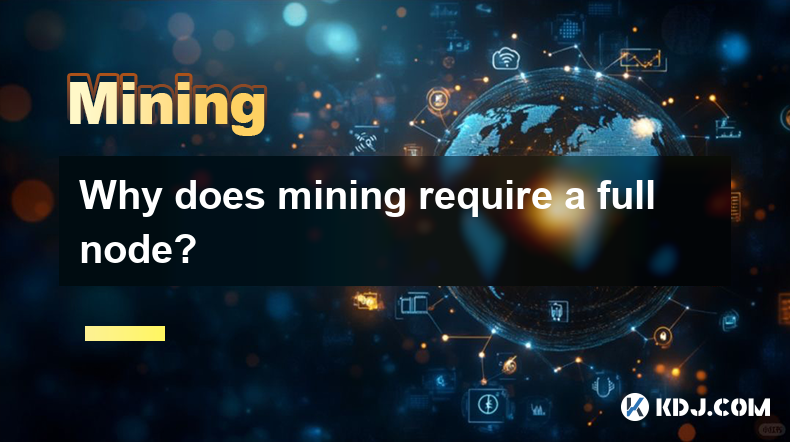
Mining in the cryptocurrency world is a complex process that involves verifying transactions and adding them to the blockchain. One of the key components required for mining is a full node. But why is a full node necessary for mining? Let's delve into the reasons and explore the intricacies of this requirement.
What is a Full Node?
A full node is a program that fully validates transactions and blocks. It stores the entire history of the blockchain, ensuring that all transactions are valid according to the rules of the network. Full nodes play a crucial role in maintaining the integrity and security of the blockchain.
The Role of Full Nodes in Mining
Mining involves solving complex mathematical problems to validate transactions and add them to the blockchain. To do this effectively, miners need to have access to the entire blockchain. Here's why a full node is essential for this process:
Validation of Transactions: Miners need to verify that the transactions they are including in a block are valid. A full node provides the necessary data to check the validity of these transactions against the entire history of the blockchain.
Blockchain Integrity: By running a full node, miners ensure that they are working with an accurate and up-to-date version of the blockchain. This is crucial for maintaining the integrity of the network and preventing fraudulent activities.
Network Consensus: Full nodes help miners stay in sync with the rest of the network. They receive and relay new blocks and transactions, ensuring that miners are always working on the most current version of the blockchain.
How Full Nodes Enhance Mining Efficiency
Running a full node can significantly enhance the efficiency of the mining process. Here are some ways in which full nodes contribute to mining efficiency:
Reduced Dependency on External Sources: By having a full node, miners do not need to rely on third-party services to access blockchain data. This reduces the risk of data manipulation and increases the reliability of the mining process.
Faster Transaction Verification: Full nodes allow miners to quickly verify transactions without needing to download data from other nodes. This speeds up the mining process and increases the chances of successfully mining a block.
Improved Security: Full nodes provide an additional layer of security by ensuring that miners are working with a complete and accurate version of the blockchain. This helps prevent attacks such as double-spending and 51% attacks.
Setting Up a Full Node for Mining
Setting up a full node for mining involves several steps. Here's a detailed guide on how to do it:
Choose the Right Hardware: Ensure that your hardware meets the minimum requirements for running a full node. This typically includes a powerful CPU, ample storage space, and a reliable internet connection.
Select the Appropriate Software: Depending on the cryptocurrency you are mining, you will need to download and install the appropriate full node software. For Bitcoin, you can use Bitcoin Core, while Ethereum miners can use Geth or Parity.
Download and Install the Software: Follow the installation instructions provided by the software developer. This usually involves downloading the software from the official website and following the installation wizard.
Configure the Node: Once the software is installed, you will need to configure it to connect to the blockchain network. This may involve setting up port forwarding, configuring firewall settings, and specifying the data directory.
Sync the Blockchain: After configuration, the full node will begin syncing with the blockchain. This process can take several hours or even days, depending on the size of the blockchain and the speed of your internet connection.
Start Mining: Once the full node is fully synced, you can start mining. Connect your mining software to the full node and begin the mining process.
The Importance of Full Node Maintenance
Maintaining a full node is crucial for ensuring the continued efficiency and security of the mining process. Here are some key aspects of full node maintenance:
Regular Updates: Keep your full node software up to date with the latest releases. This ensures that you have the latest security patches and features.
Monitoring: Regularly monitor the performance of your full node to ensure it is running smoothly. Check for any errors or issues that may affect its operation.
Backup: Regularly back up your full node data to prevent data loss in case of hardware failure or other issues.
Security Measures: Implement security measures such as firewalls, antivirus software, and strong passwords to protect your full node from potential attacks.
The Impact of Full Nodes on Network Decentralization
Full nodes play a vital role in maintaining the decentralization of the blockchain network. By running a full node, miners contribute to the decentralization of the network in several ways:
Distributed Validation: Full nodes distribute the validation process across the network, reducing the reliance on a central authority. This enhances the security and resilience of the blockchain.
Preventing Centralization: By running their own full nodes, miners prevent the centralization of the network. This ensures that no single entity can control the blockchain, maintaining its decentralized nature.
Supporting Network Growth: Full nodes support the growth of the network by providing additional points of validation and data storage. This helps the network scale and handle increasing transaction volumes.
Frequently Asked Questions
Q: Can I mine without a full node?
A: While it is technically possible to mine without a full node by relying on third-party services, it is not recommended. Mining without a full node increases the risk of data manipulation and reduces the security and efficiency of the mining process.
Q: How much storage space do I need for a full node?
A: The amount of storage space required for a full node depends on the size of the blockchain. For Bitcoin, you will need at least 500 GB of storage space, while Ethereum requires around 1 TB. It's important to have enough storage to accommodate future growth of the blockchain.
Q: Can I run a full node on a cloud server?
A: Yes, you can run a full node on a cloud server. This can be a convenient option if you do not have the necessary hardware at home. However, ensure that the cloud server meets the hardware requirements and has a reliable internet connection.
Q: How long does it take to sync a full node?
A: The time it takes to sync a full node can vary depending on the size of the blockchain and the speed of your internet connection. For Bitcoin, it can take anywhere from a few hours to several days. Ethereum may take a similar amount of time, depending on the current size of the blockchain.
Disclaimer:info@kdj.com
The information provided is not trading advice. kdj.com does not assume any responsibility for any investments made based on the information provided in this article. Cryptocurrencies are highly volatile and it is highly recommended that you invest with caution after thorough research!
If you believe that the content used on this website infringes your copyright, please contact us immediately (info@kdj.com) and we will delete it promptly.
- XLM's immediate prospects look bleak, with its price chart flashing a "rising wedge" breakdown.
- 2025-04-16 15:20:12
- Shares Mostly Lower in Asia After Quiet Day on Wall Street
- 2025-04-16 15:20:12
- Ripple CEO Brad Garlinghouse Reveals the Company Is in Talks with the SEC to Settle Their Legal Dispute, Possibly with an XRP Payment
- 2025-04-16 15:15:13
- Solana (SOL) Price Targets $300 as SOL/ETH Ratio Hits All-Time Highs
- 2025-04-16 15:15:13
- XRP's Rebound: Eyes on a Significant Surge
- 2025-04-16 15:10:13
- The Ripple SEC case finally seems to come to an end
- 2025-04-16 15:10:13
Related knowledge
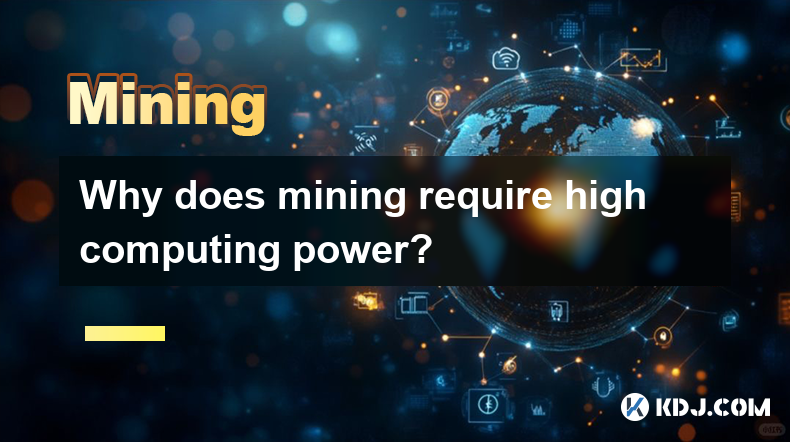
Why does mining require high computing power?
Apr 16,2025 at 12:07pm
Mining in the cryptocurrency world, particularly in the case of Bitcoin and other Proof of Work (PoW) cryptocurrencies, is a process that demands significant computational resources. This article delves into the reasons behind this high demand for computing power, exploring the technical intricacies and the underlying principles that necessitate such re...
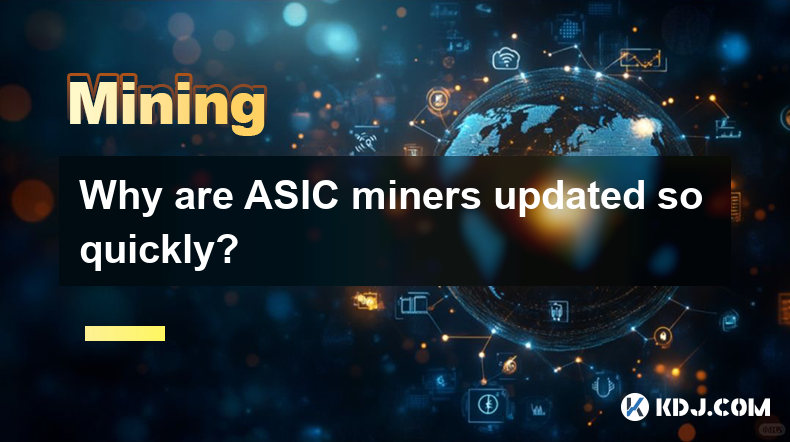
Why are ASIC miners updated so quickly?
Apr 16,2025 at 01:07pm
The rapid updates of ASIC miners in the cryptocurrency industry are driven by several key factors that contribute to their constant evolution and improvement. ASIC miners, or Application-Specific Integrated Circuit miners, are specialized hardware designed to mine specific cryptocurrencies with high efficiency. The primary reason for their frequent upda...
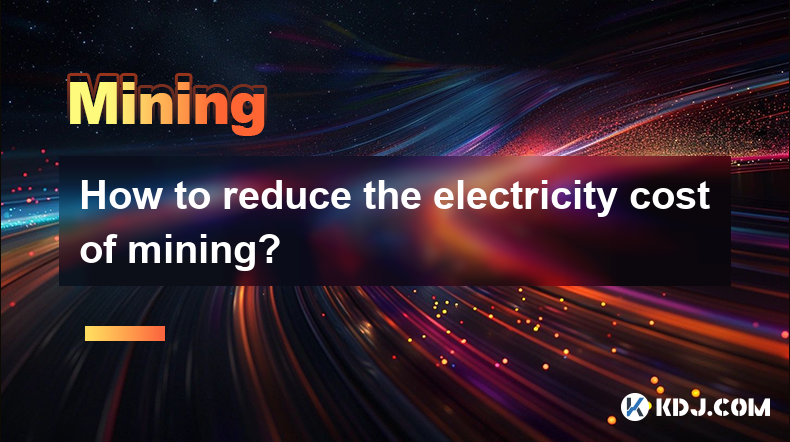
How to reduce the electricity cost of mining?
Apr 16,2025 at 08:42am
Mining cryptocurrencies, particularly Bitcoin, is an energy-intensive process that can lead to significant electricity costs. However, there are several strategies that miners can employ to reduce these expenses and make their operations more cost-effective. In this article, we will explore various methods to minimize the electricity cost of mining. Cho...
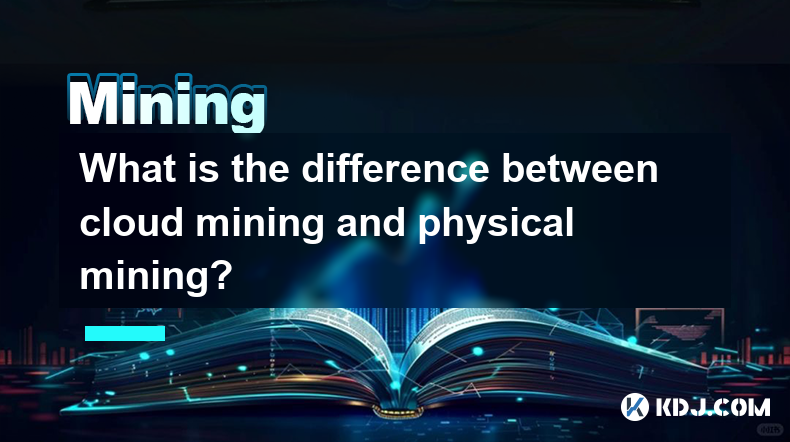
What is the difference between cloud mining and physical mining?
Apr 16,2025 at 01:49am
What is the difference between cloud mining and physical mining? In the world of cryptocurrencies, mining is the process by which new coins are generated and transactions are verified and added to the blockchain. There are two primary methods of mining: cloud mining and physical mining. Understanding the differences between these two approaches can help...
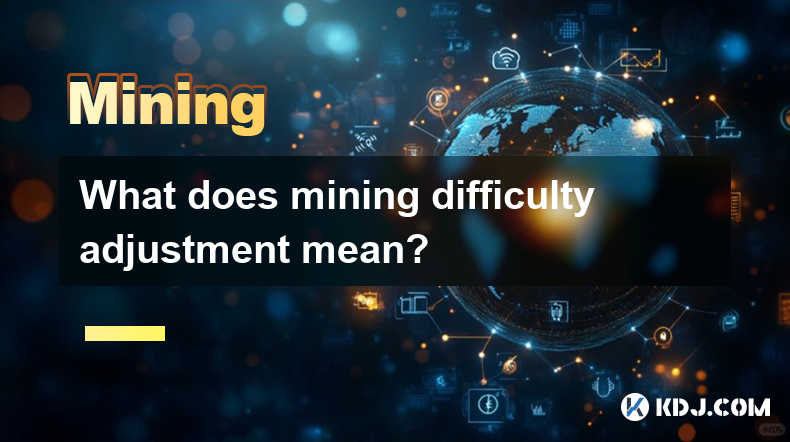
What does mining difficulty adjustment mean?
Apr 16,2025 at 12:42am
What does mining difficulty adjustment mean? Mining difficulty adjustment is a crucial mechanism in blockchain networks, particularly in Proof of Work (PoW) systems like Bitcoin. It ensures that the rate at which new blocks are added to the blockchain remains consistent, despite fluctuations in the total computational power (hash rate) of the network. T...

How to choose a suitable cryptocurrency for mining?
Apr 16,2025 at 10:15am
Choosing a suitable cryptocurrency for mining involves several considerations that can impact your profitability and efficiency. Mining cryptocurrencies can be a rewarding venture, but it requires careful planning and research. In this article, we will explore the key factors to consider when selecting a cryptocurrency for mining, ensuring you make an i...

Why does mining require high computing power?
Apr 16,2025 at 12:07pm
Mining in the cryptocurrency world, particularly in the case of Bitcoin and other Proof of Work (PoW) cryptocurrencies, is a process that demands significant computational resources. This article delves into the reasons behind this high demand for computing power, exploring the technical intricacies and the underlying principles that necessitate such re...

Why are ASIC miners updated so quickly?
Apr 16,2025 at 01:07pm
The rapid updates of ASIC miners in the cryptocurrency industry are driven by several key factors that contribute to their constant evolution and improvement. ASIC miners, or Application-Specific Integrated Circuit miners, are specialized hardware designed to mine specific cryptocurrencies with high efficiency. The primary reason for their frequent upda...

How to reduce the electricity cost of mining?
Apr 16,2025 at 08:42am
Mining cryptocurrencies, particularly Bitcoin, is an energy-intensive process that can lead to significant electricity costs. However, there are several strategies that miners can employ to reduce these expenses and make their operations more cost-effective. In this article, we will explore various methods to minimize the electricity cost of mining. Cho...

What is the difference between cloud mining and physical mining?
Apr 16,2025 at 01:49am
What is the difference between cloud mining and physical mining? In the world of cryptocurrencies, mining is the process by which new coins are generated and transactions are verified and added to the blockchain. There are two primary methods of mining: cloud mining and physical mining. Understanding the differences between these two approaches can help...

What does mining difficulty adjustment mean?
Apr 16,2025 at 12:42am
What does mining difficulty adjustment mean? Mining difficulty adjustment is a crucial mechanism in blockchain networks, particularly in Proof of Work (PoW) systems like Bitcoin. It ensures that the rate at which new blocks are added to the blockchain remains consistent, despite fluctuations in the total computational power (hash rate) of the network. T...

How to choose a suitable cryptocurrency for mining?
Apr 16,2025 at 10:15am
Choosing a suitable cryptocurrency for mining involves several considerations that can impact your profitability and efficiency. Mining cryptocurrencies can be a rewarding venture, but it requires careful planning and research. In this article, we will explore the key factors to consider when selecting a cryptocurrency for mining, ensuring you make an i...
See all articles























































































